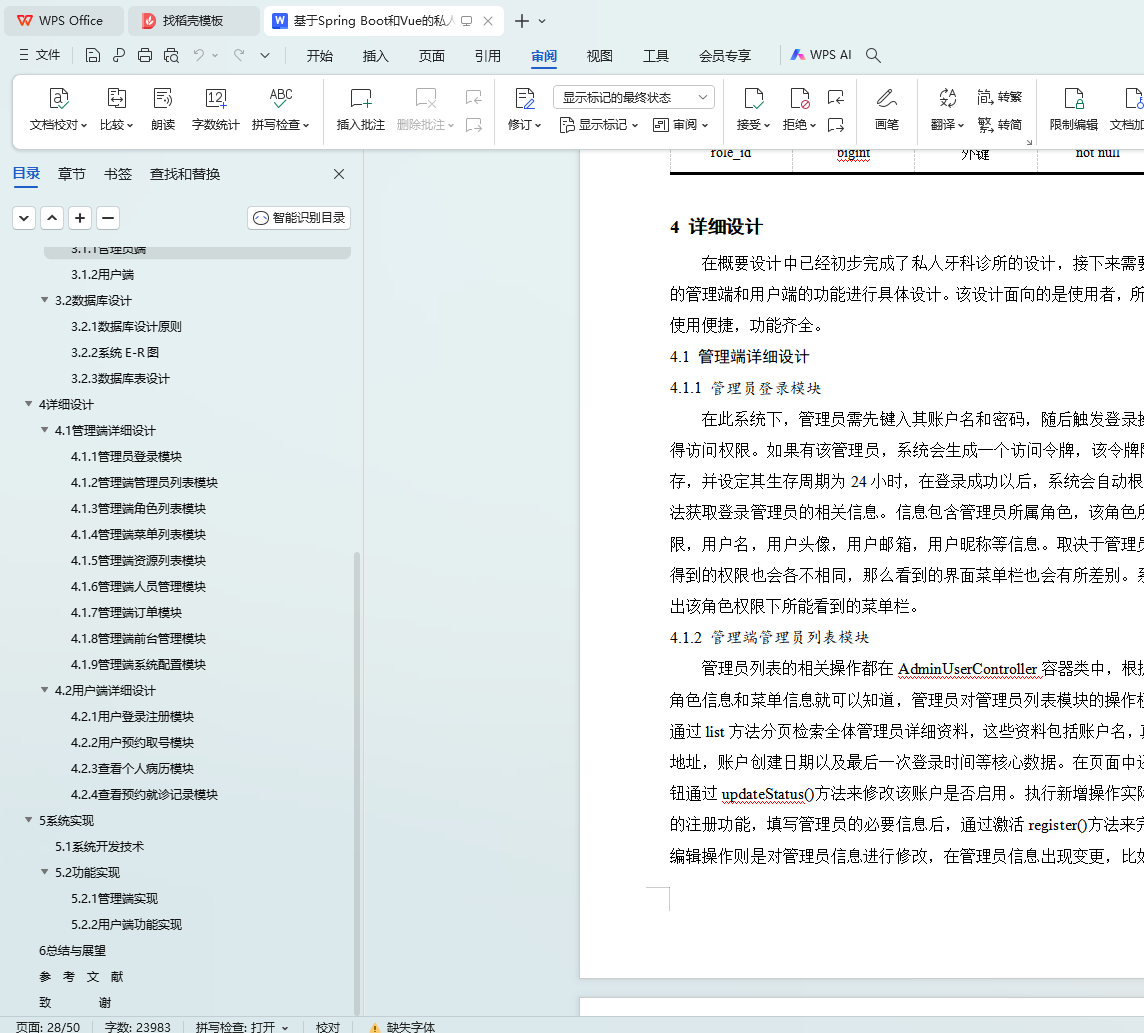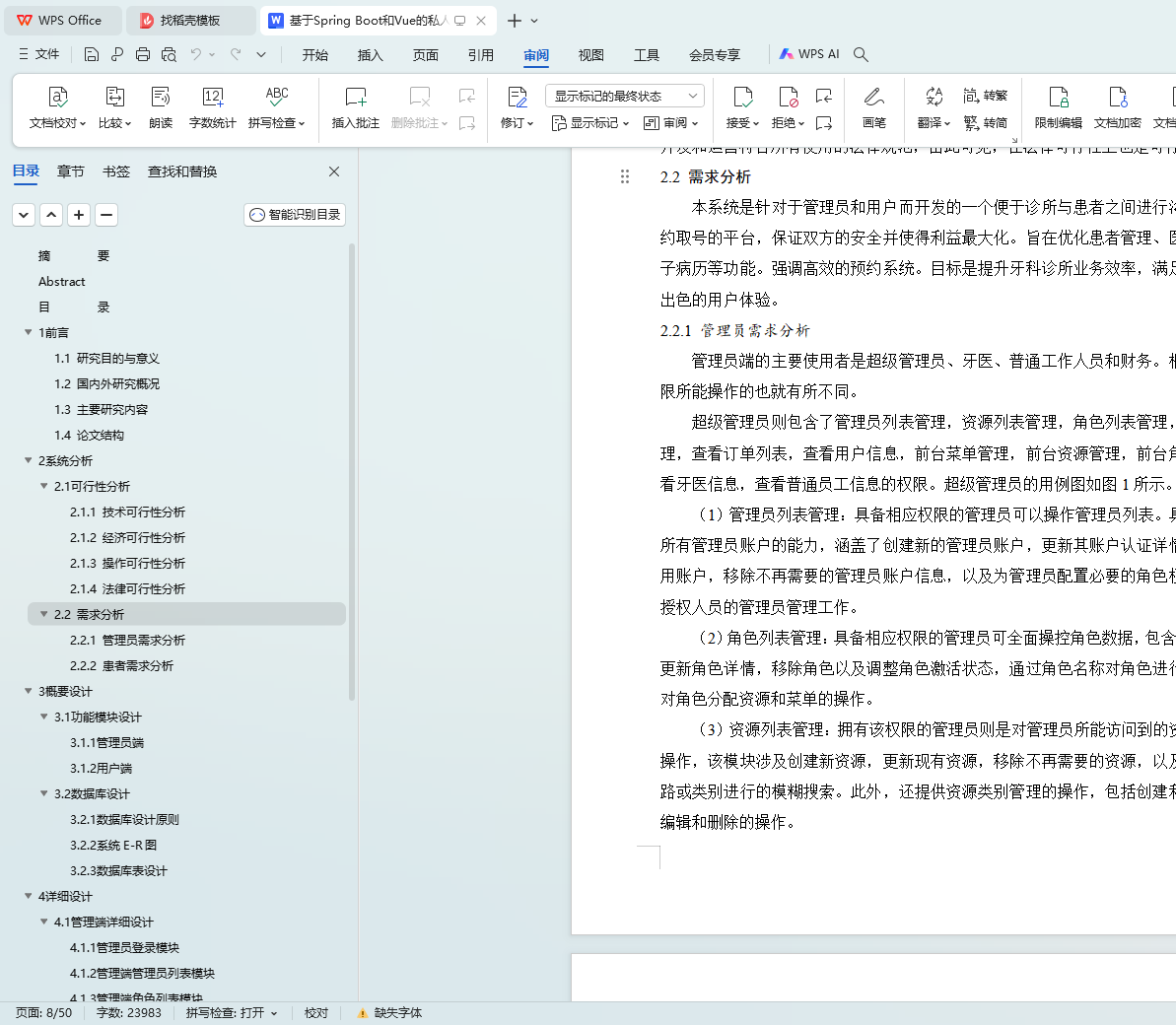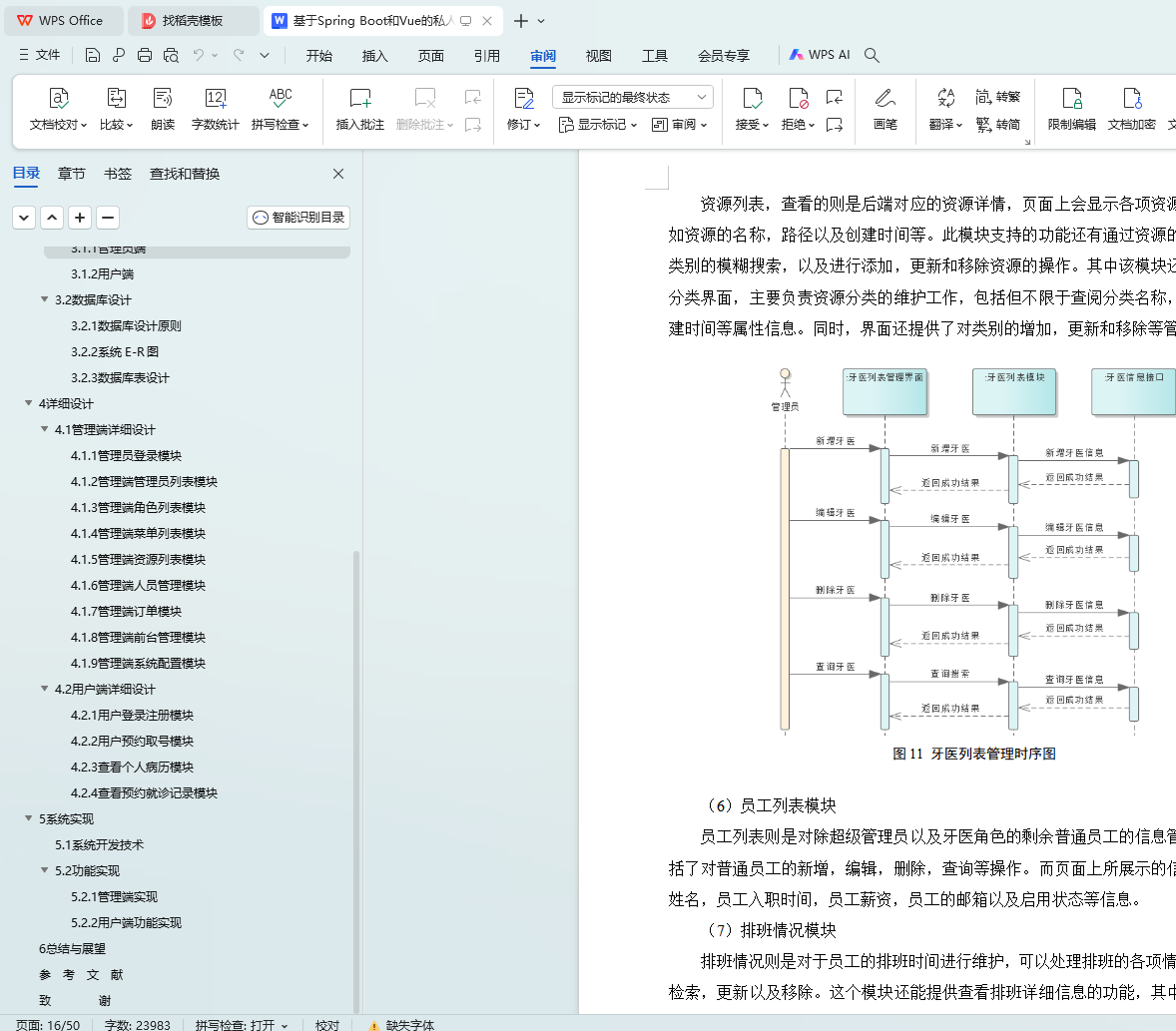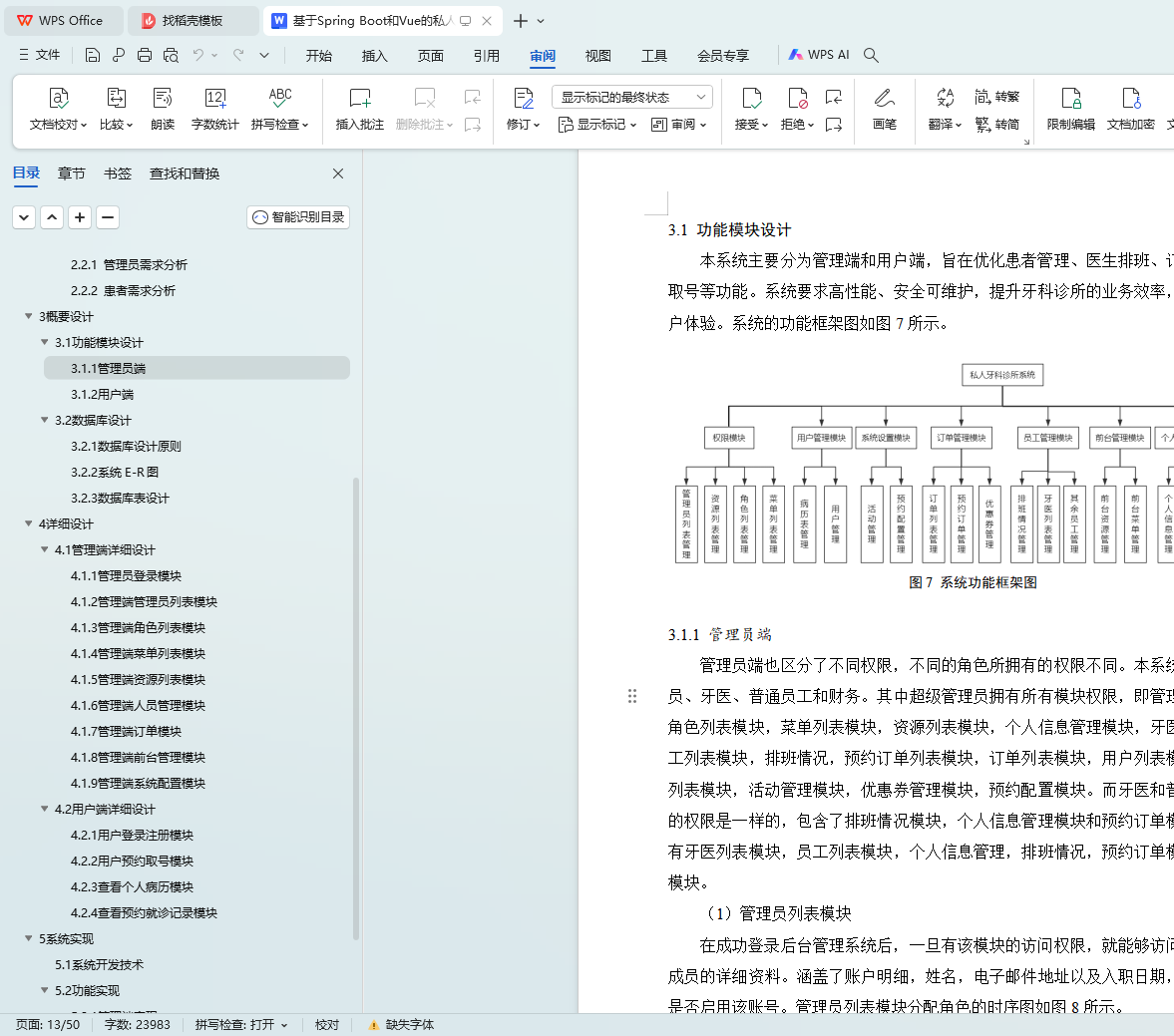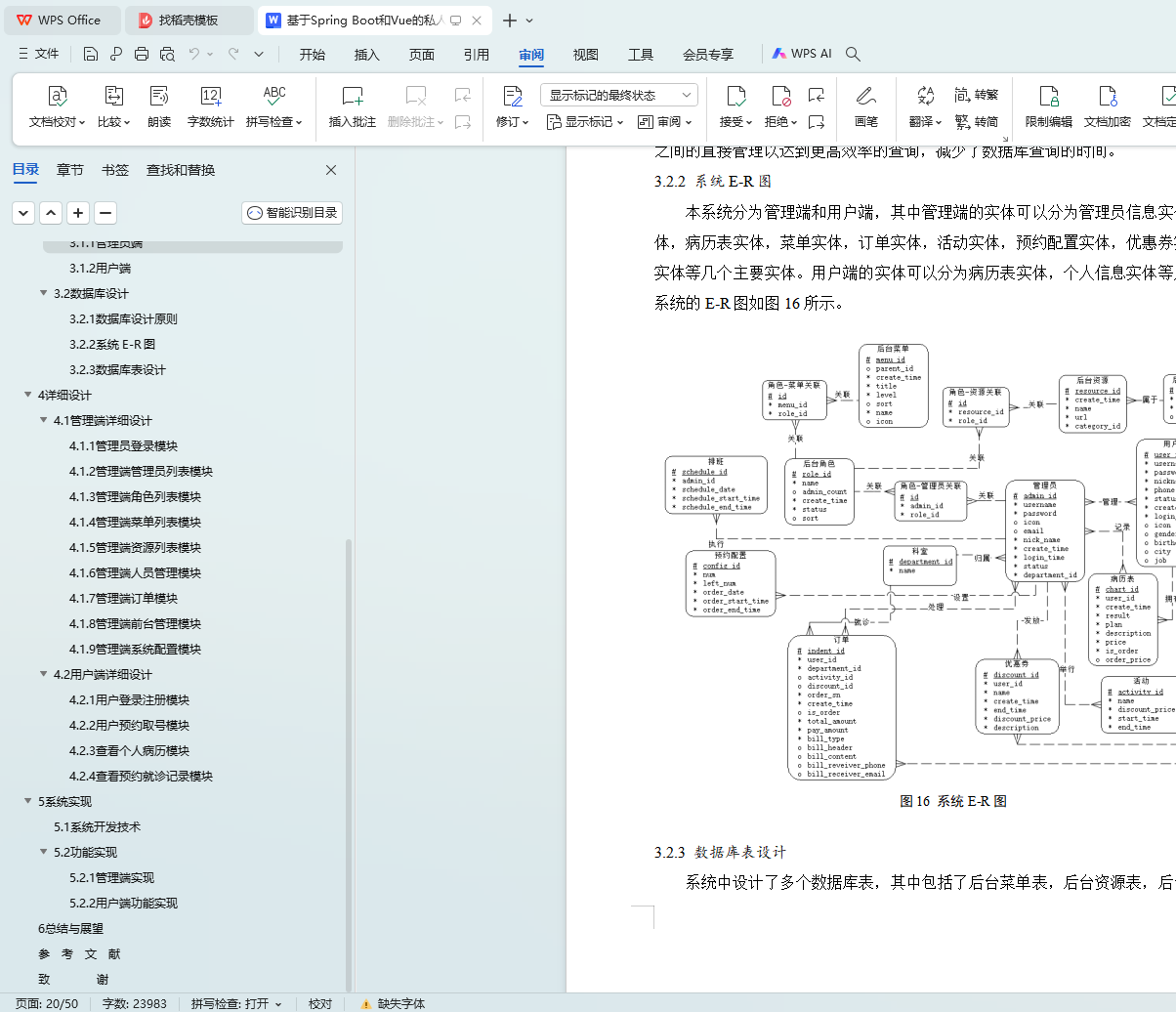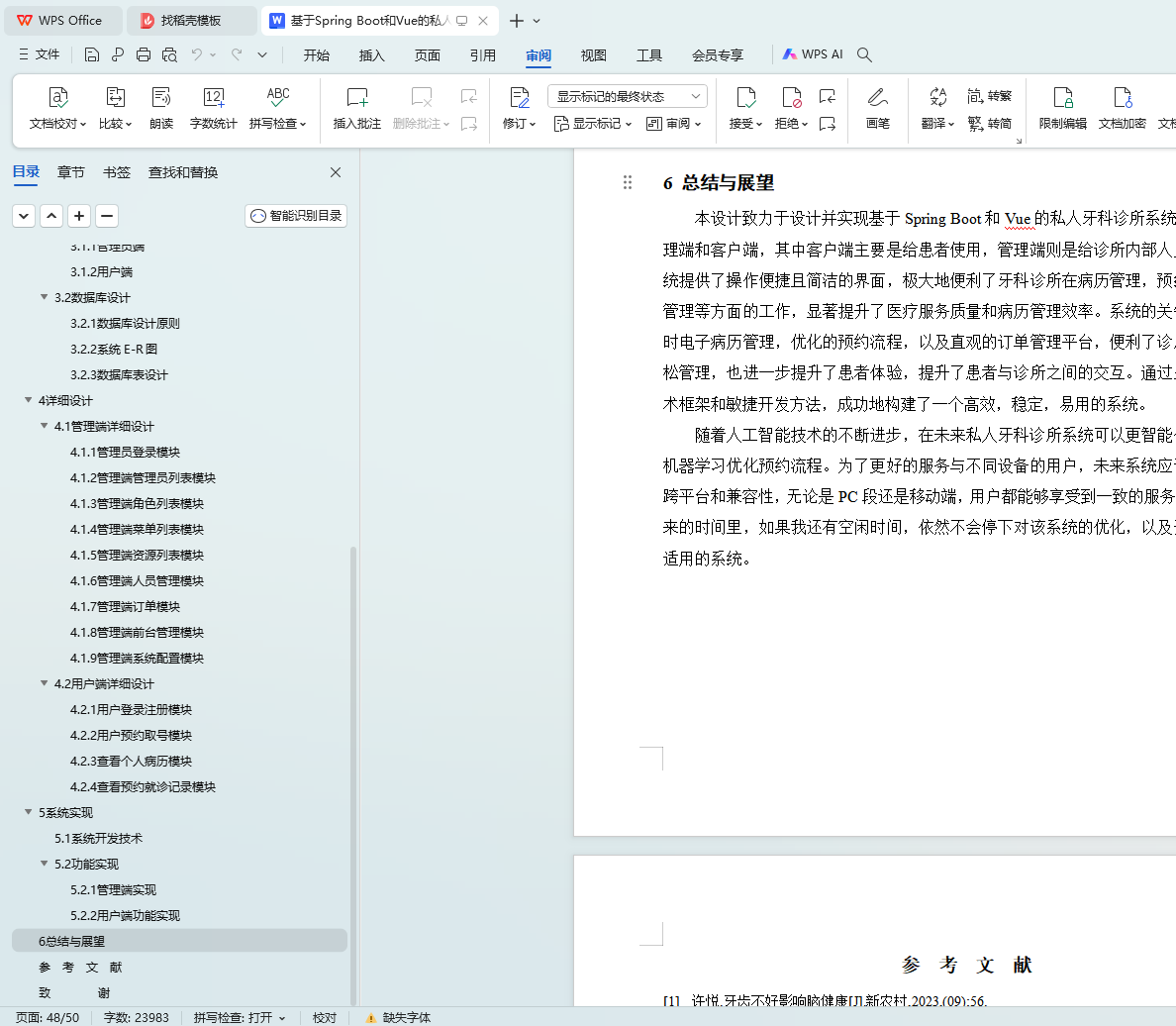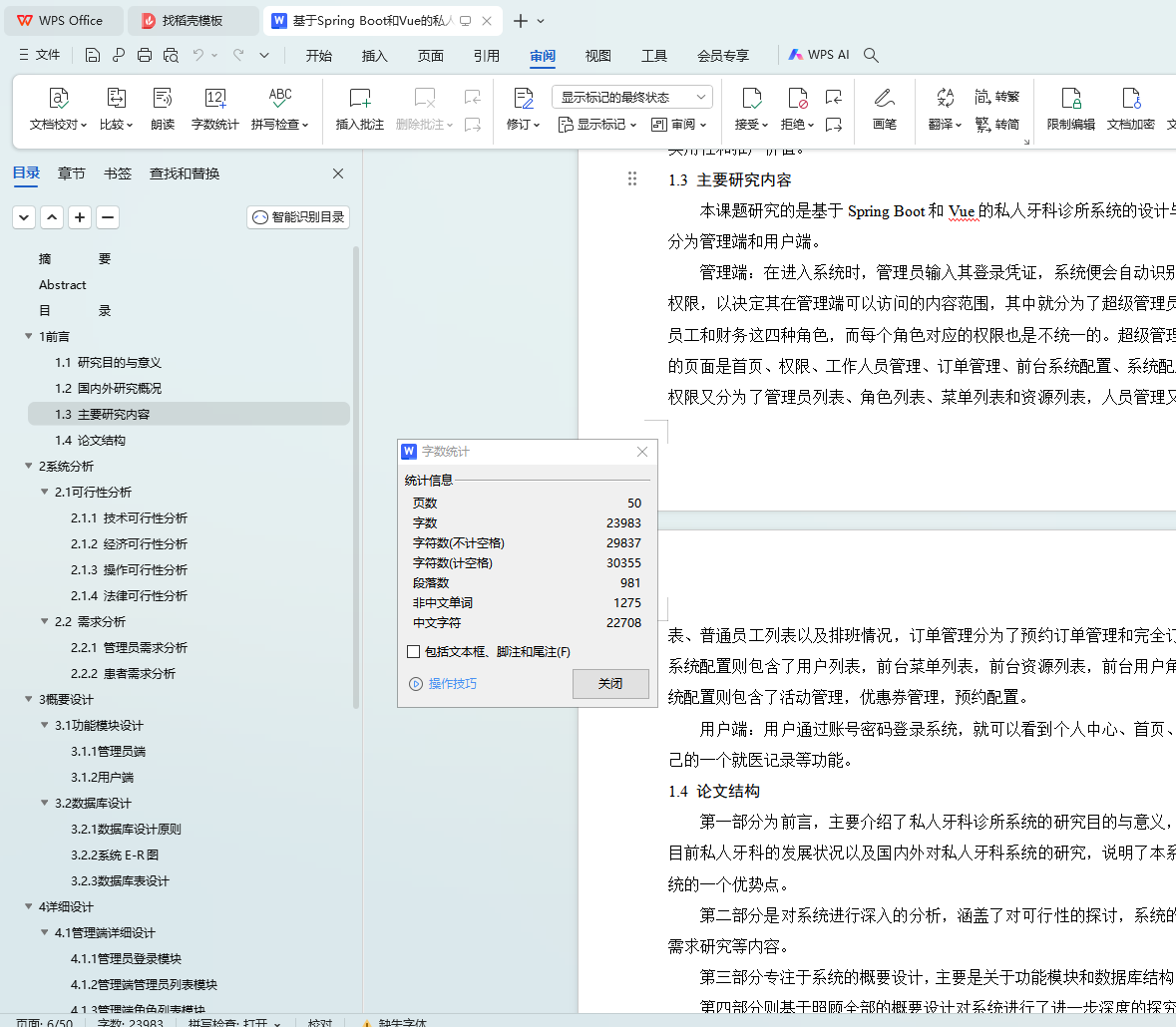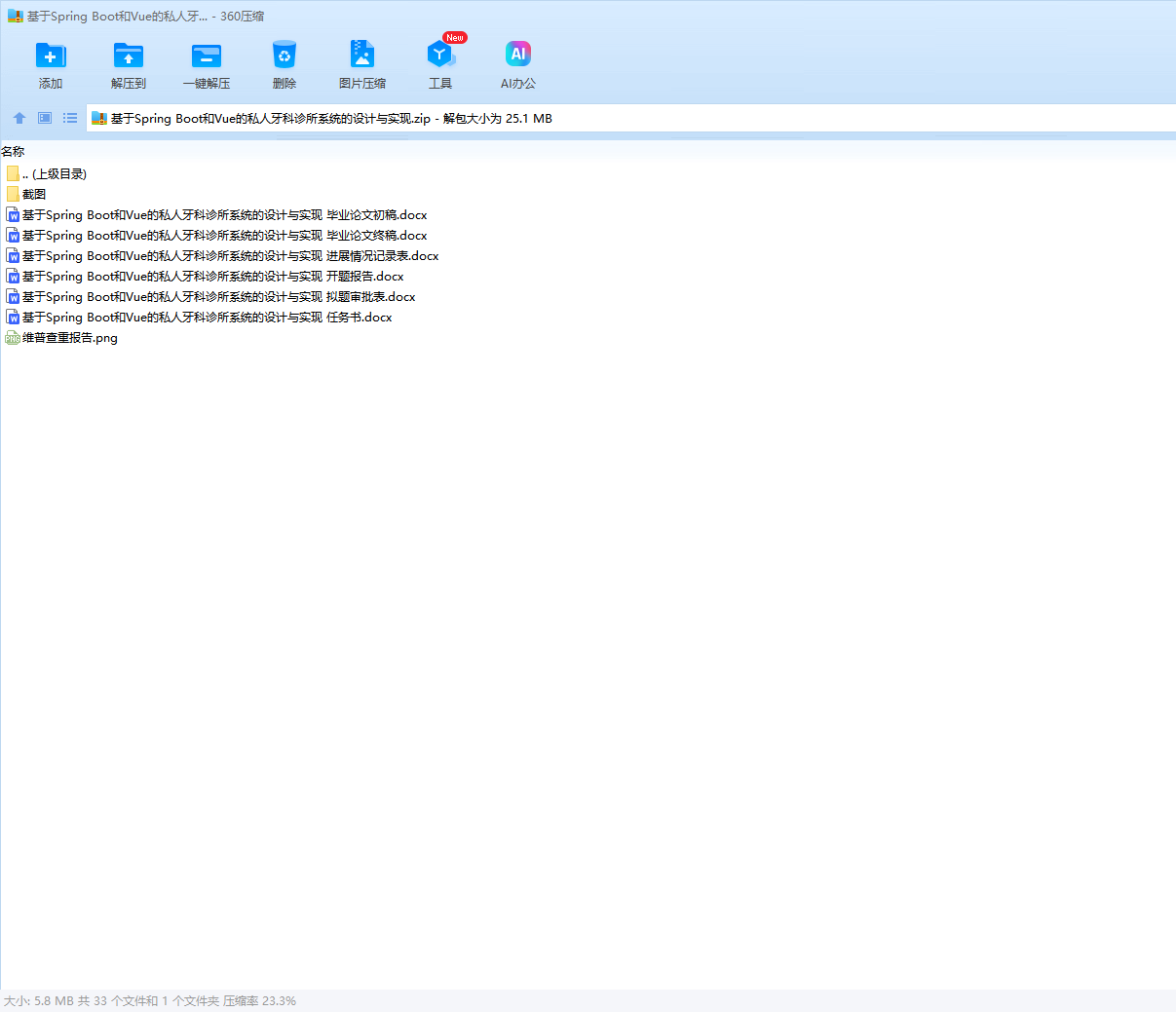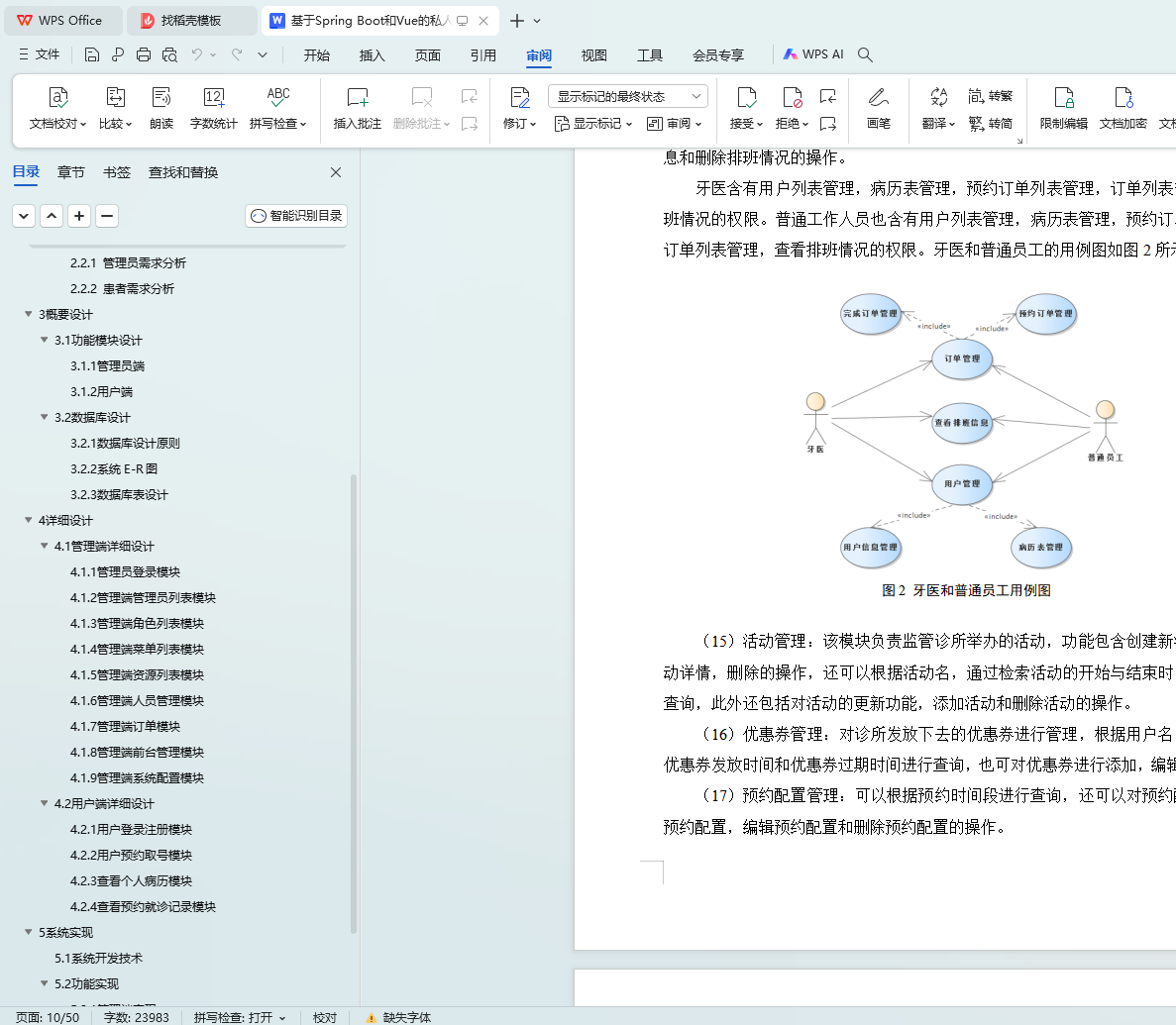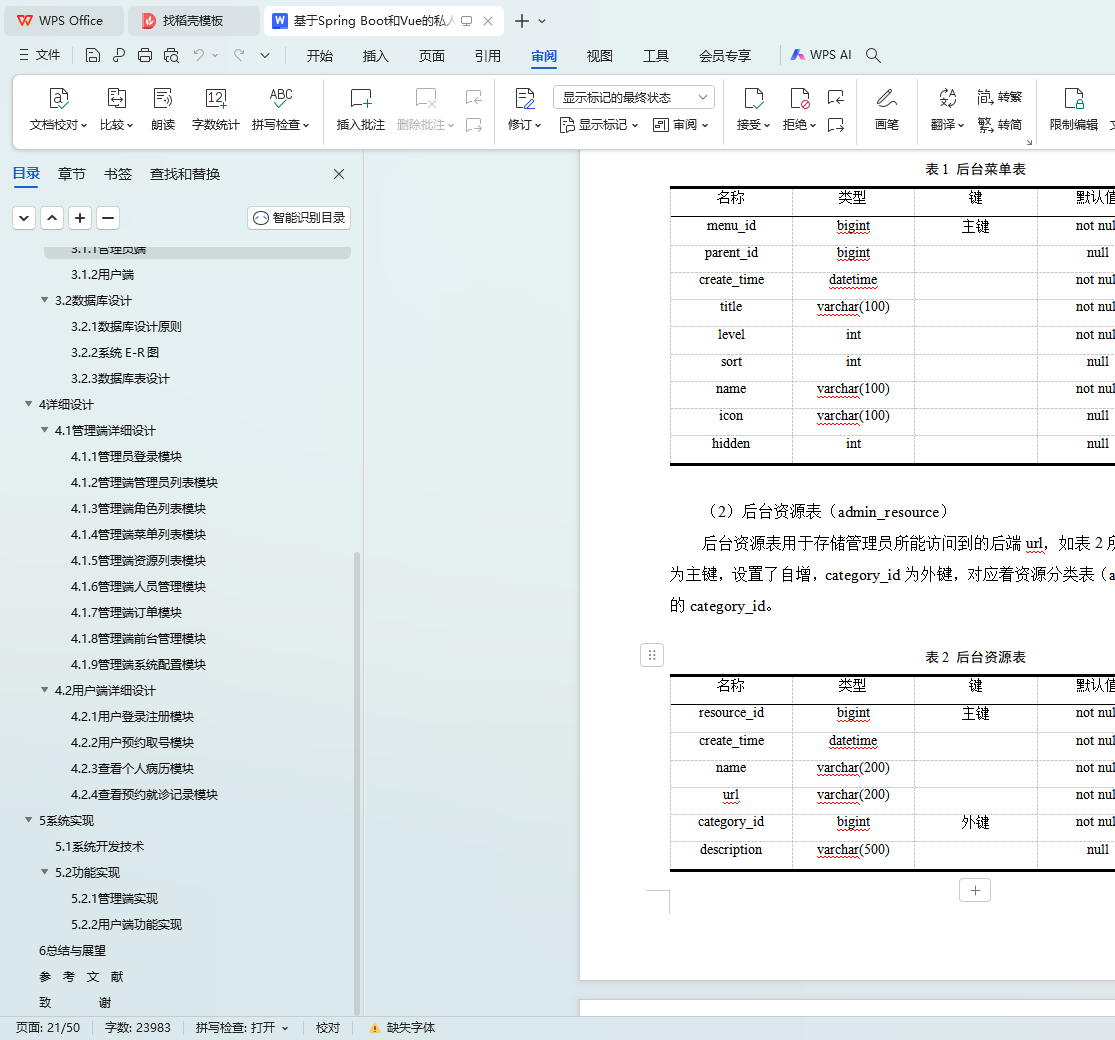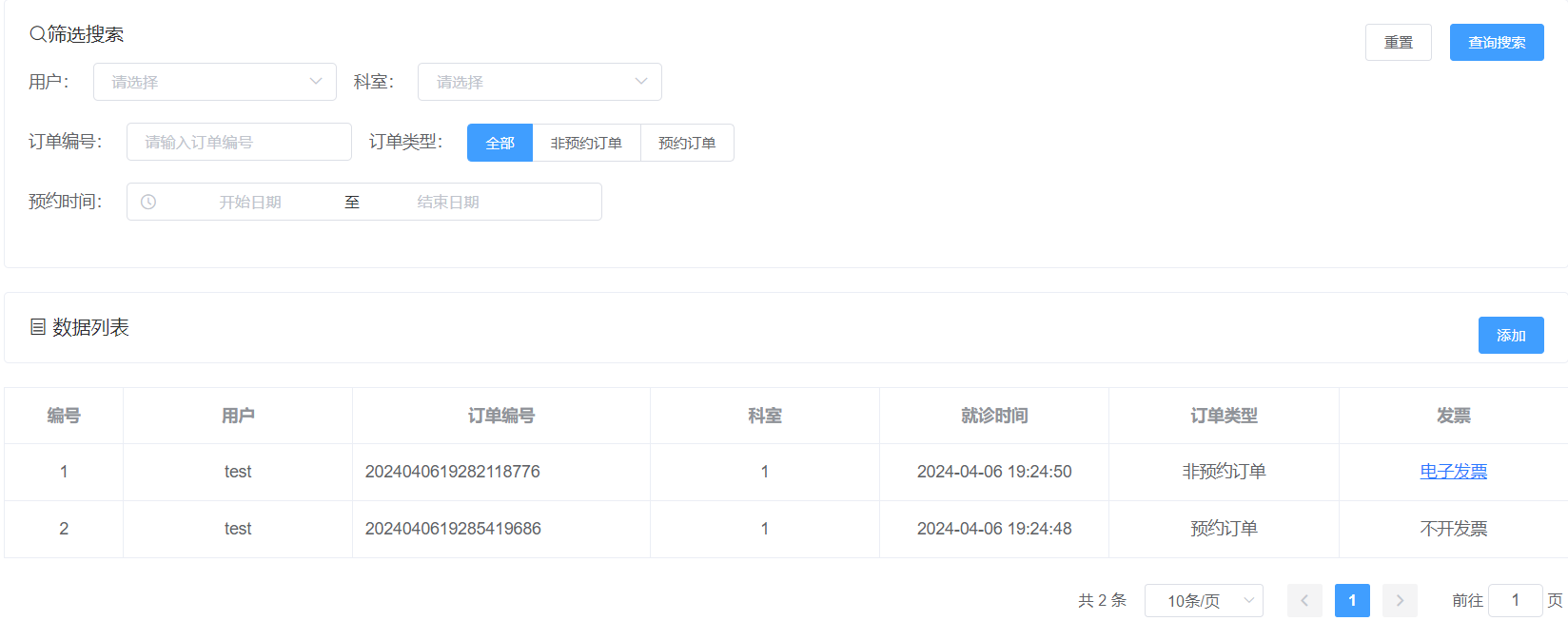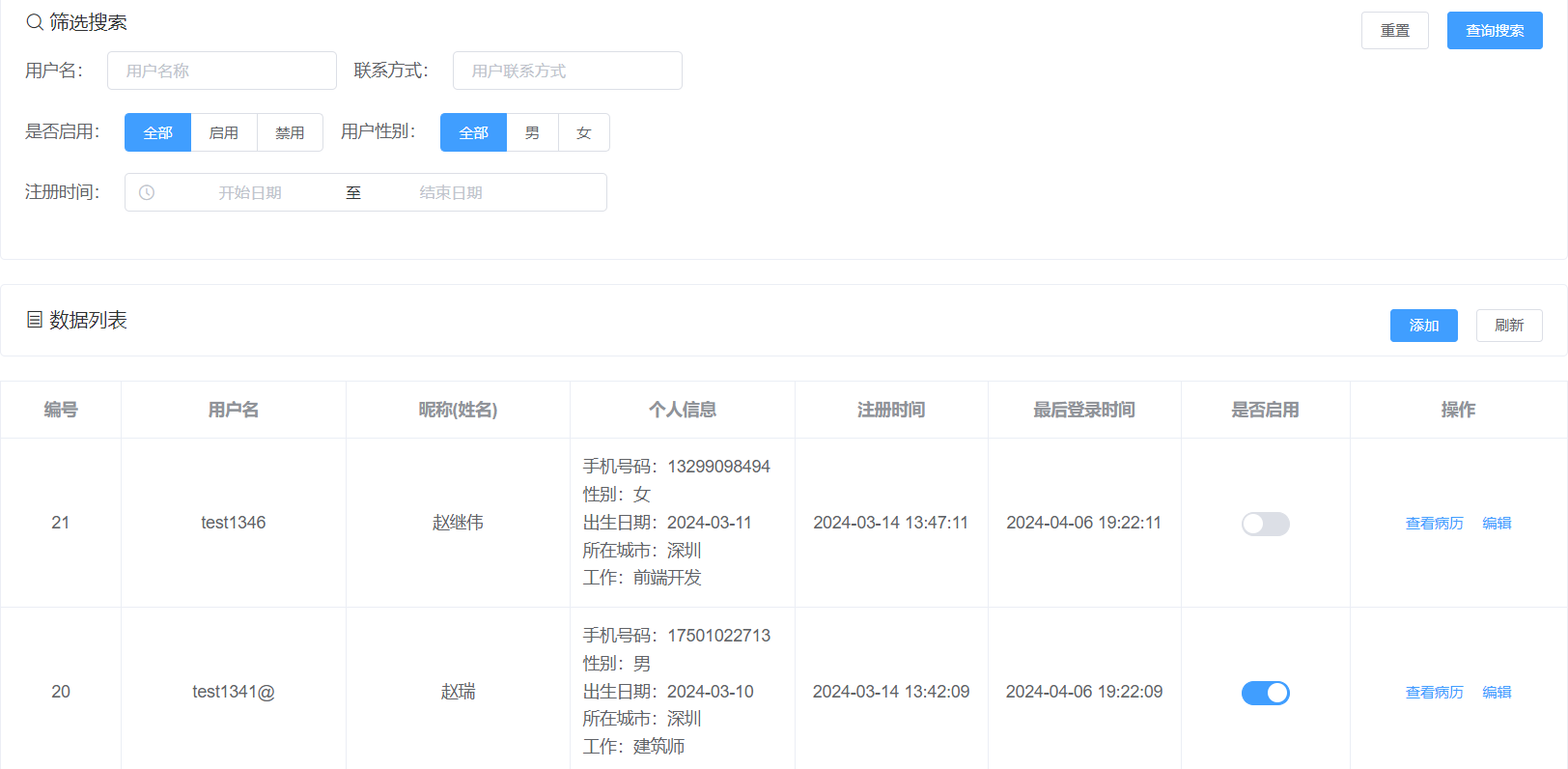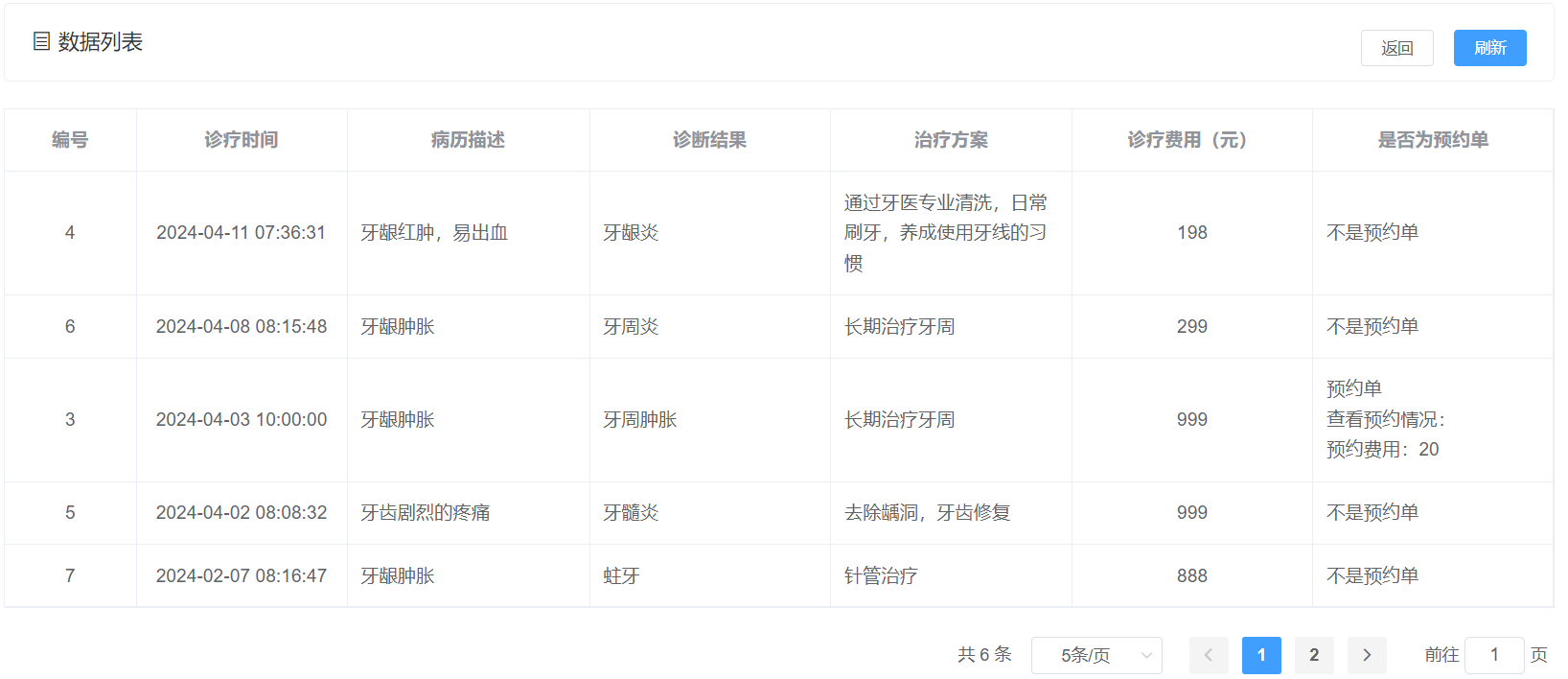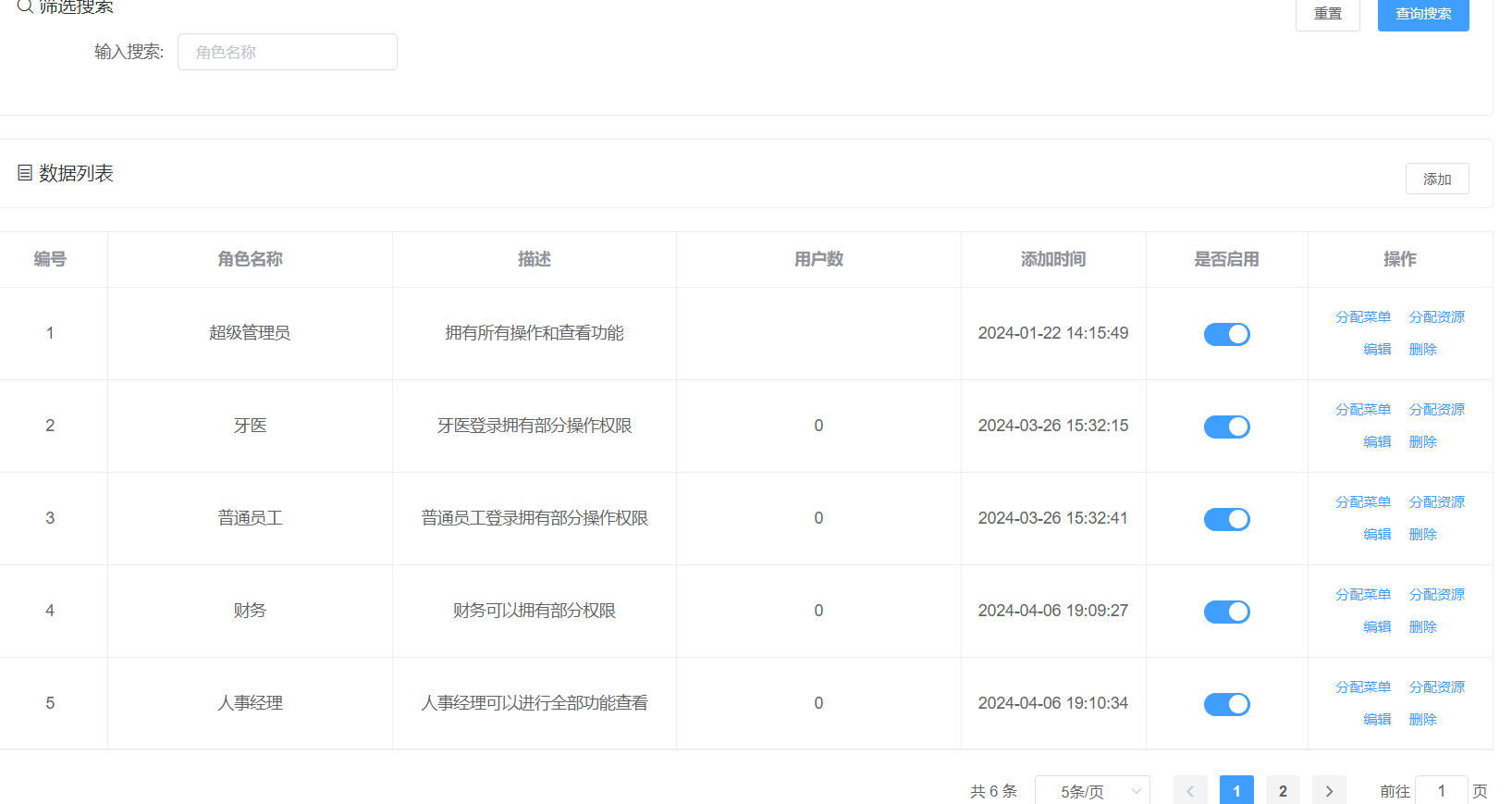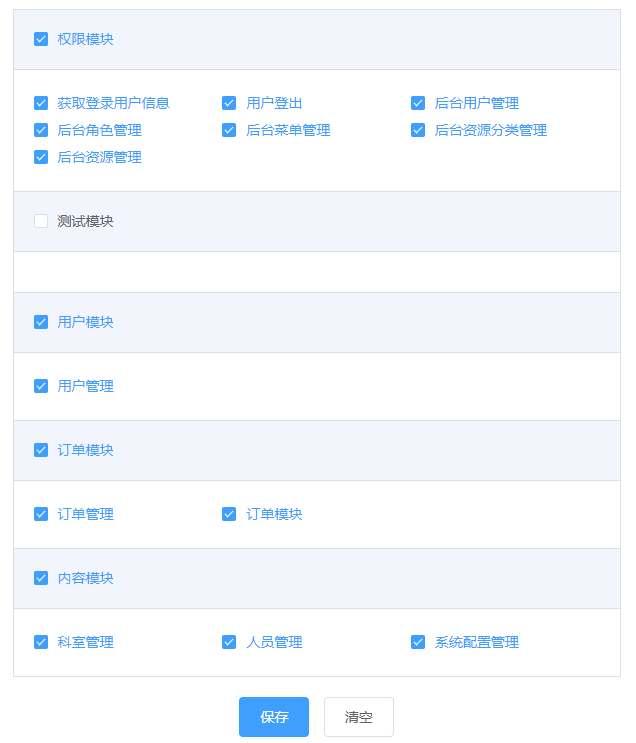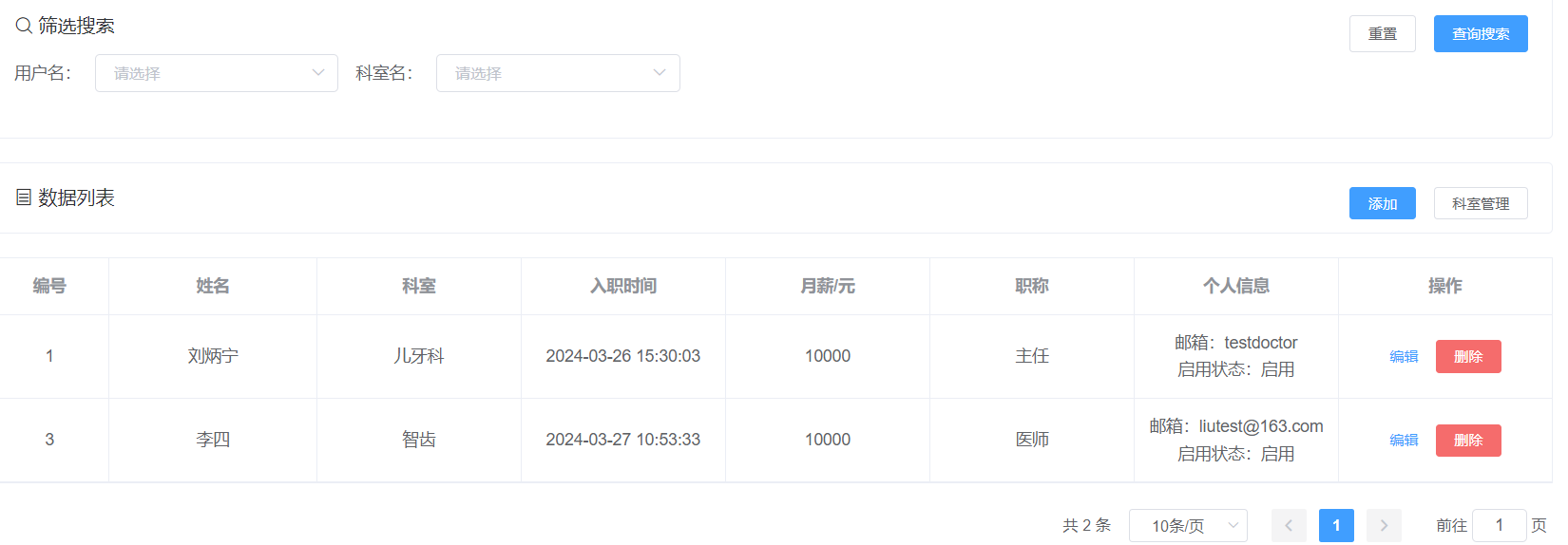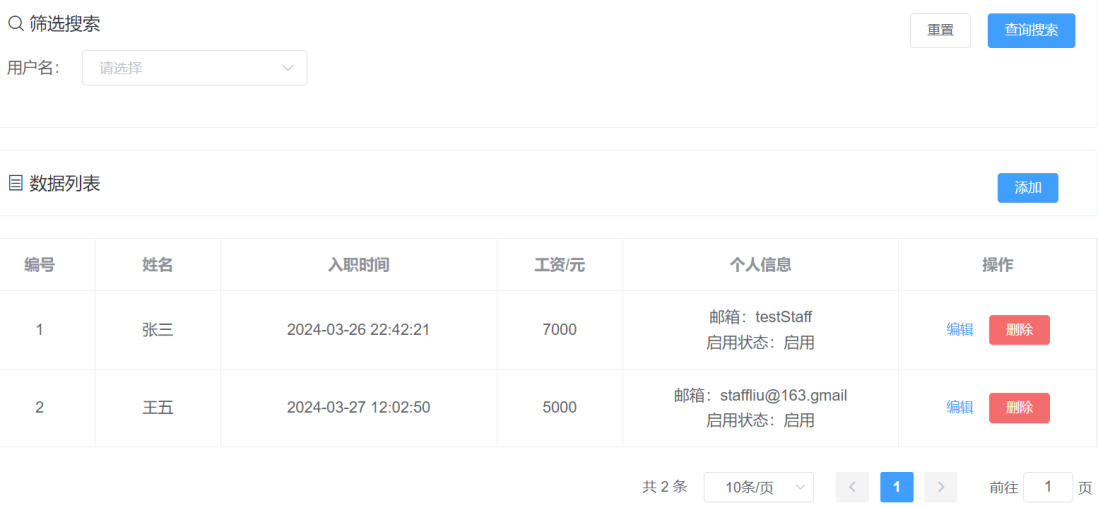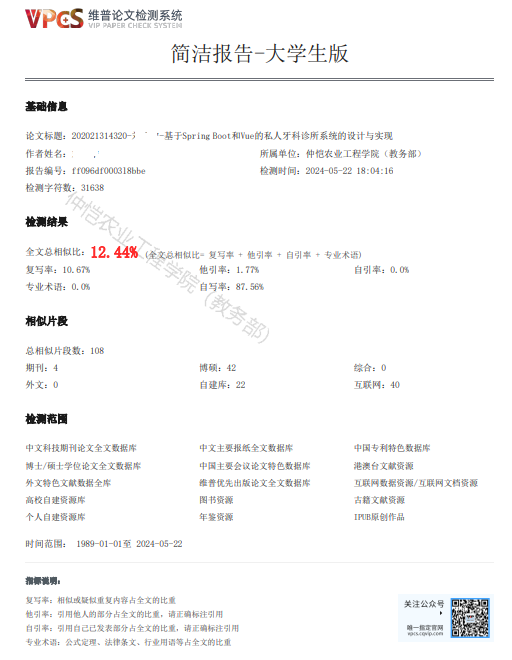摘 要
在传统医院口腔科,患者经常面临排队时间长、就诊流程繁琐、预约不方便等诸多问题。为了满足患者对便捷服务的需求,私人牙科诊所应运而生,它们通常提供更个性化的服务体验。在数字化时代背景下,诊所的信息化管理与服务变得尤为重要。本文开发了一款专为私人牙科诊所设计的信息化管理系统。本文采用UML统一建模语言对系统的业务流程进行了详细的可行性分析、需求分析、概要设计与详细分析。系统采用了当前技术成熟的Spring Boot后端框架和Vue前端技术进行开发,通过前后端分离的开发模式,提高了系统开发的灵活性和可维护性,数据库存储则是选择了MySQL。本系统优化了患者管理,医生排班,电子病历,订单管理和高效预约取号就诊等功能,实现了无刷新页面跳转,为用户提供出色的使用体验,使得私人牙科诊所可以更高效地进行业务处理,从而提高用户的满意度和诊所的运营效率。
关键词:私人牙科诊所;预约取号;Spring Boot;Vue;MySQL
Abstract
In traditional hospital dental departments, patients often face many problems such as long waiting times, cumbersome treatment procedures and inconvenient appointments. Private dental clinics have emerged to meet patients demand for convenient service, often offering a more personalized service experience. In the context of the digital age, information management and clinic services have become particularly important. In this thesis, an information management system specifically designed for private dental clinics is developed. The unified modeling language UML is used to conduct a detailed feasibility analysis, requirement analysis, high level design and low-level design of the business process of the system. The system is developed using the mature Spring Boot back-end framework and Vue front-end technology. The separation of front-end and back-end development improves the flexibility and maintainability of the system development. MySQL is selected for database storage. This system optimizes the functions of patient management, doctor scheduling, electronic medical records, order management and efficient appointment booking, etc. It realizes page jumps without refreshing, provides users with an excellent user experience, and allows private dental clinics to operate more efficiently. business processing, thereby improving user satisfaction and clinic operational efficiency.
Keywords: private dental clinic; appointment booking; Spring Boot; Vue; MySQL
目 录
1 前言
1.1 研究目的与意义
1.2 国内外研究概况
1.3 主要研究内容
1.4 论文结构
2 系统分析
2.1 可行性分析
2.1.1 技术可行性分析
2.1.2 经济可行性分析
2.1.3 操作可行性分析
2.1.4 法律可行性分析
2.2 需求分析
2.2.1 管理员需求分析
2.2.2 用户需求分析
3 概要设计
3.1 功能模块设计
3.1.1 管理员端
3.1.2 用户端
3.2 数据库设计
3.2.1 数据库设计原则
3.2.2 系统E-R图
3.2.3 数据库表设计
4 详细设计
4.1 管理端详细设计
4.1.1 管理员登录模块
4.1.2 管理端管理员列表模块
4.1.3 管理端角色列表模块
4.1.4 管理端菜单列表模块
4.1.5 管理端资源列表模块
4.1.6 管理端人员管理模块
4.1.7 管理端订单模块
4.1.8 管理端前台管理模块
4.1.9 管理端系统配置模块
4.2 用户端详细设计
4.2.1 用户登录注册模块
4.2.2 用户预约取号模块
4.2.3 查看个人病历模块
4.2.4 查看预约就诊记录模块
5 系统实现
5.1 系统开发技术
5.2 功能实现
5.2.1 管理端实现
5.2.2 用户端功能实现
6 总结与展望
参考文献
致谢
